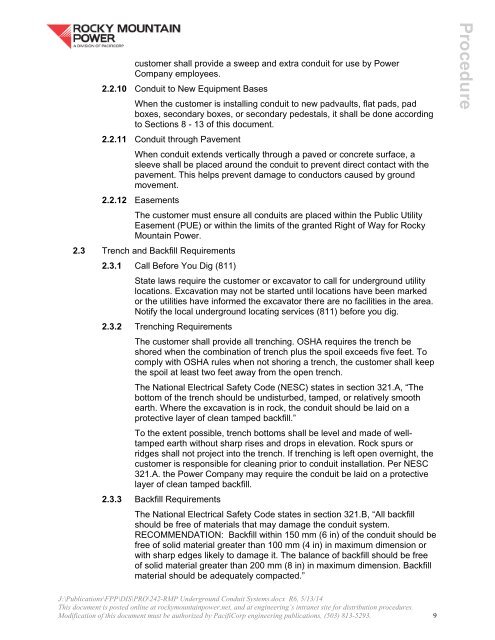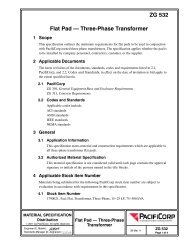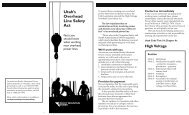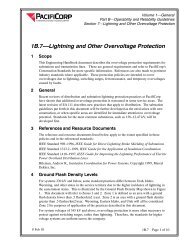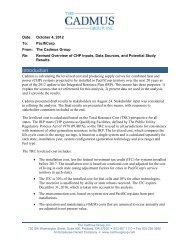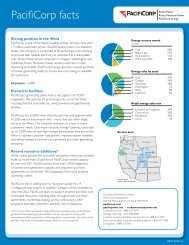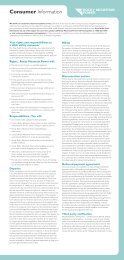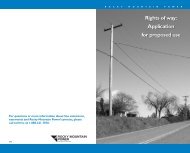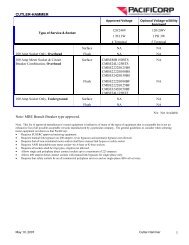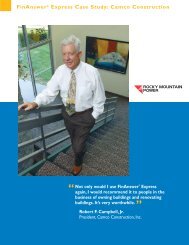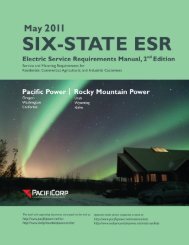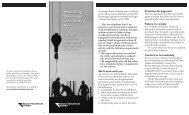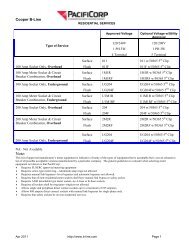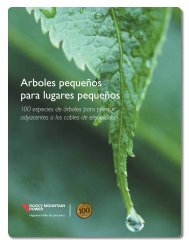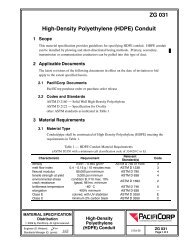RMP Underground Conduit System Installation Guide (Procedure 242)
RMP Underground Conduit System Installation Guide (Procedure 242)
RMP Underground Conduit System Installation Guide (Procedure 242)
Create successful ePaper yourself
Turn your PDF publications into a flip-book with our unique Google optimized e-Paper software.
customer shall provide a sweep and extra conduit for use by PowerCompany employees.2.2.10 <strong>Conduit</strong> to New Equipment BasesWhen the customer is installing conduit to new padvaults, flat pads, padboxes, secondary boxes, or secondary pedestals, it shall be done accordingto Sections 8 - 13 of this document.2.2.11 <strong>Conduit</strong> through PavementWhen conduit extends vertically through a paved or concrete surface, asleeve shall be placed around the conduit to prevent direct contact with thepavement. This helps prevent damage to conductors caused by groundmovement.2.2.12 EasementsThe customer must ensure all conduits are placed within the Public UtilityEasement (PUE) or within the limits of the granted Right of Way for RockyMountain Power.2.3 Trench and Backfill Requirements2.3.1 Call Before You Dig (811)State laws require the customer or excavator to call for underground utilitylocations. Excavation may not be started until locations have been markedor the utilities have informed the excavator there are no facilities in the area.Notify the local underground locating services (811) before you dig.2.3.2 Trenching RequirementsThe customer shall provide all trenching. OSHA requires the trench beshored when the combination of trench plus the spoil exceeds five feet. Tocomply with OSHA rules when not shoring a trench, the customer shall keepthe spoil at least two feet away from the open trench.The National Electrical Safety Code (NESC) states in section 321.A, “Thebottom of the trench should be undisturbed, tamped, or relatively smoothearth. Where the excavation is in rock, the conduit should be laid on aprotective layer of clean tamped backfill.”To the extent possible, trench bottoms shall be level and made of welltampedearth without sharp rises and drops in elevation. Rock spurs orridges shall not project into the trench. If trenching is left open overnight, thecustomer is responsible for cleaning prior to conduit installation. Per NESC321.A. the Power Company may require the conduit be laid on a protectivelayer of clean tamped backfill.2.3.3 Backfill RequirementsThe National Electrical Safety Code states in section 321.B, “All backfillshould be free of materials that may damage the conduit system.RECOMMENDATION: Backfill within 150 mm (6 in) of the conduit should befree of solid material greater than 100 mm (4 in) in maximum dimension orwith sharp edges likely to damage it. The balance of backfill should be freeof solid material greater than 200 mm (8 in) in maximum dimension. Backfillmaterial should be adequately compacted.”<strong>Procedure</strong>J:\Publications\FPP\DIS\PRO\<strong>242</strong>-<strong>RMP</strong> <strong>Underground</strong> <strong>Conduit</strong> <strong>System</strong>s.docx R6, 5/13/14This document is posted online at rockymountainpower.net, and at engineering’s intranet site for distribution procedures.Modification of this document must be authorized by PacifiCorp engineering publications, (503) 813-5293. 9


